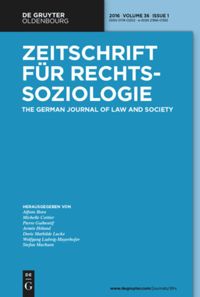English Trajectory of a Transnational Right to Land Norm
Schlagwörter:
EnglishAbstract
Konflikte um die Nutzung und den Besitz von Land sind Teil der Menschheitsgeschichte. Auch heute noch sind vulnerable Gruppen von der Enteignung ihres Landes bedroht. Daher sind Regulierungsstrukturen erforderlich, die sowohl individuelle als auch kollektive Landrechte schützen. Um diesem Risiko zu begegnen, haben sich soziale Bewegungen für die Schaffung einer Recht auf Land Norm eingesetzt. Aufbauend auf der Literatur zur Entstehung von Normen wird in diesem Artikel die Rolle von Aktivist*innen im Entstehungsprozess von zwei transnational Regulierungen von Land betrachtet: Die Indigenous and Tribal Peoples Convention Nr. 169 der International Labour Organisation (ILO) von 1989 und die Voluntary Guidelines on the Responsible Governance of Tenure of Land, Fisheries, and Forests in the Context of National Food Security (VGGT) der Food and Agricultural Organization der Vereinten Nationen von 2012. Beide Dokumente entstanden als Reaktion auf die global steigende Aufmerksamkeit für das jeweilige Thema. Im Falle der ILO 169 war es das wachsende Bewusstsein für soziale Ungleichheit und die Diskriminierung indigener Bevölkerung und im Falle der VGGT der schnell wachsende globale Landmarkt. Soziale Bewegungen spielten eine entscheidende Rolle bei der Schaffung dieser Instrumente. Der Artikel reflektiert die Bedeutung von Timing, Engagement und Diskurs bei der Schaffung von Normen und deren Verankerung in globalen Regulierungen.

